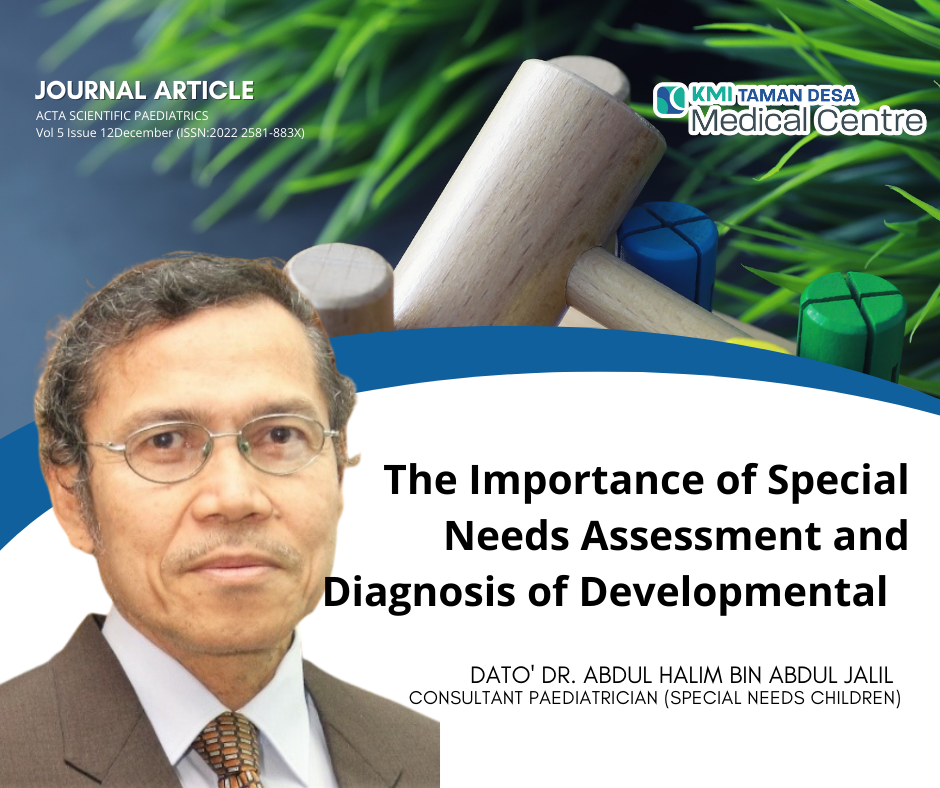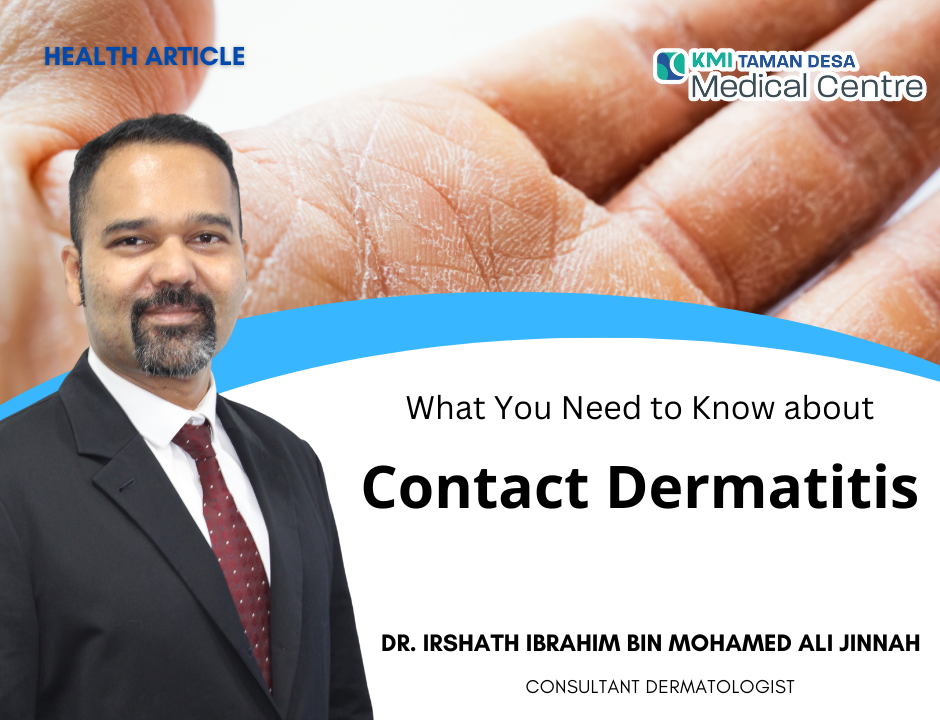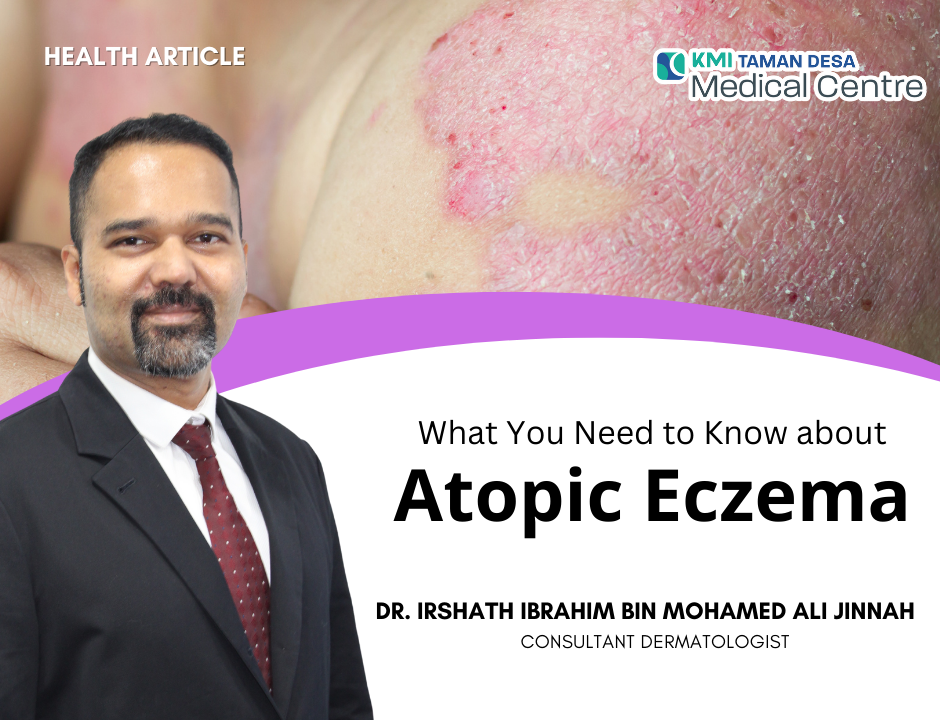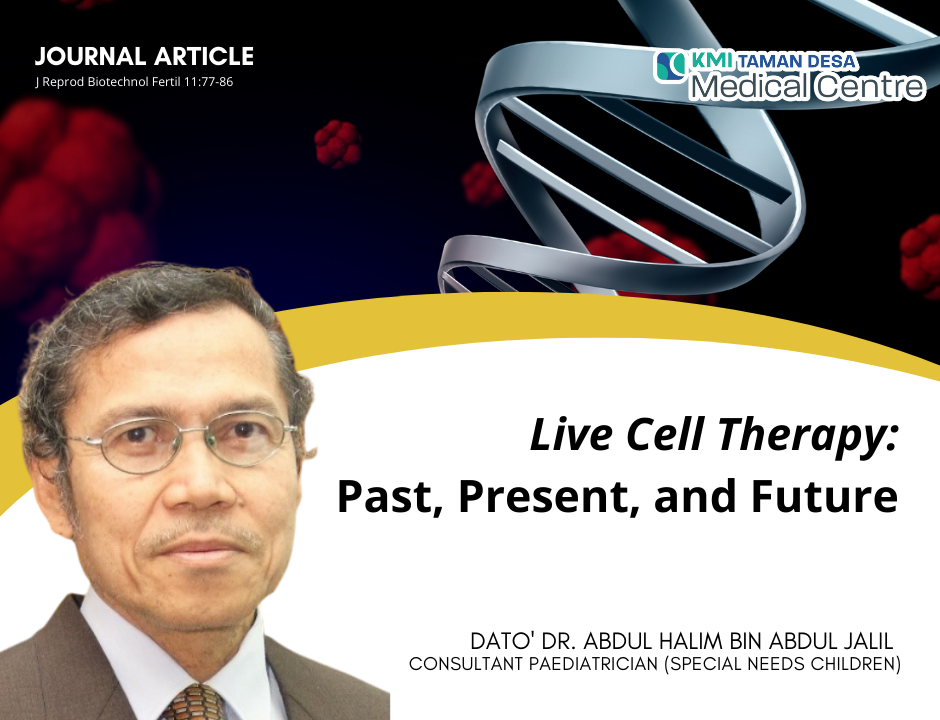[TDMC] The Importance of Special Needs Assessment and Diagnosis of Developmental Problems at an Early Age

[TDMC] Knee Pain Overview
21 September 2022
[TDMC] Live Cell Therapy: Past, Present, and Future
8 December 2022
It is estimated that 0.3% of children have severe developmental impairments. Mental handicap, epilepsy, deafness, visual and hearing defects, cerebral palsy, Down syndrome, and other chromosomal and genetic disorders are among the categories [1]. The estimate may be at least 1% if you take into account children with mild visual and hearing deficits, fine- and gross-motor aberrations, social, linguistic, and learning issues which are sufficient to cause concern in their first year of school.
In reality provision of a high quality developmental diagnostic service coupled with an appropriate early interventional developmental therapy program is not within the reach of the majority of children either because of lack of such services or the failure of utilization of these services. This is regrettable because interventional programs for such children if started as early as the infant stage should result in much better developmental outcome because of the higher degree of neuroplasticity at this stage of rapid brain growth.
Every newborn has the capacity to develop to the fullest extent possible and become whatever it is that they would choose to be or do. It is not the genes that determine the destiny of a person but rather the myriad of environmental signals that influences the physical, emotional, psychospiritual and socio intellectual development (epigenetic factors) of the person; It other words the life experience [2].
The intrauterine environment itself influences the physical and mental development of the fetus. Here is where the mother’s own health status, perceptions and thoughts during the pregnancy provide epigenetic signals to her fetus. The perinatal outcome is unique to every infant delivered. The first newborn inspection will determine the infant’s condition and whether it needs special care to correct the athophysiological dysfunctions due to hypoxia, infections or other factors. Any obvious physical defects and recognizable genetic or chromosomal abnormalities will be noted.
A neurodevelopmental evaluation that includes a developmental evaluation should thereafter begin to be performed on high risk newborns as part of ongoing pediatric care. It is important to provide the mother with anticipatory advice regarding the child’s medical, developmental therapy and educational needs. In actuality, the majority of children will receive medical care and preventive services from their primary healthcare providers, such as immunizations and dietary advice.
Early recognition of hearing deficit is important and must betreated and/or hearing aids provided as it can lead to poor language development and poor school performance if not adequately addressed. Poor eye to eye contact, lack of reciprocal smile and vocalization, difficulty in establishing age appropriate motor, social and communication skills must be flagged and provided with a developmental diagnosis leading to early intervention therapy program. The frequency of children with core symptoms and signs of autism has clearly increased over the years. It is important that these children be comprehensively assessed early to find the causes (toxins, metabolic dysfunction, dysbiotic related, leaky gut, inflammogen exposure, etc.) [3,4] and that the appropriate comprehensive therapy protocol implemented as early as possible to reduce or completely eliminate the potential disastrous secondary effects of poor school performance and social maladaptation.
Recognizing and referring children with learning disabilities for confirmatory diagnoses is important.
All these categories of disabilities should be picked up early by general medical practitioners, therapists, preschool teachers and referred for comprehensive assessment and diagnosis. Early intervention program (for those below 3 years) and special education program (for those above 3 years) should be instituted.
It is our hope that all children will receive the nutrition, the physical activity experiences and care needed to be in school with healthy minds and bodies and to have the mental alertness necessary for learning. Those with developmental dysfunctions should have access to early intervention program and developmentally appropriate preschool education program to help them prepare for formal school and if necessary remedial education. All too often we meet children with developmental dysfunctions at 5 years of age and above who have yet to receive the required developmental diagnosis and treatment program.
Consequently the developmental dysfunctions are more severe than they should be, which makes it more challenging to attain the best results from the therapy and rehabilitation programs put in place.
References:
- Kassim M S and Halim A J. “Survey for identification of severe childhood disability in Malaysia”. Proceedings of the 17th International Congress of Pediatrics (1986).
- Abdul Halim Abdul Jalil. “Hope for untreatable medical disorders”. Live Cell Therapy Explained. Troubador Publishing Ltd., Leicester, UK (2017): 218-219.
- Greta Fowlie.,et al. “The Perturbance of Microbioma and Gut Brain Axis in Autism Spectrum Disorders.” International Journal of Molecular Sciences 19.8 (2018):2251.
- Holingue C., et al. “Gastrointestinal Symptoms in Autism Spectrum Disorder: A Review of the Literature on Ascertainment and Prevalence.” Autism Research 11 (2017): 24-36.
By:
Dato’ Dr. Abdul Halim Abdul Jalil
Consultant Paediatrician
Journal at https://drive.google.com/file/d/1hUSAngUV4rGs5qg4oQME-38byxd0cxC6/view?usp=share_link




